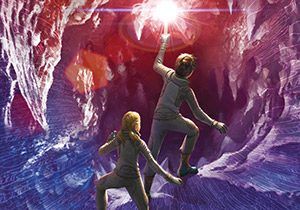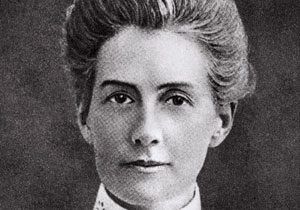
Cupid’s Creatures Primary Resource
This Valentine’s Day, meet eight species with a special someone in their lives…
This primary resource introduces children to different animals that form loyal (sometimes life-long) bonds with a chosen mate. Discover fascinating facts and beautiful images of eight species that ‘couple up’. How to Macaroni penguin couples look after their eggs? Why sandhill cranes sing and dance together? How do male mute swans protect their partners and their young?
In this resource sheet, pupils will learn about eight different species – the mute swan, grey wolf, Kirk’s did-dik, black vulture, sandhill crane, macaroni penguin, malagasy giant rat and convict cichlid. As well information about the relationships that these species form, pupils will learn about the animals’ anatomy, habitat, eating habits and environmental adaptations.
This teaching resource can be used in study group tasks for investigating different wildlife species – in particular, their communication techniques and mating habits. It can be used as a printed handout for each pupil to review and annotate, or for display on the interactive whiteboard using the images included in the resource for class discussion.
Activity: Provide each pupil with a map of the world – or get the pupils to draw their own map – and ask them to annotate/label the map to show where each of the animals can be found in the wild. The children could draw the animals on the map and include two to three facts about each species, using the information in the primary resource.
N.B. The following information for mapping the resource documents to the school curriculum is specifically tailored to the English National Curriculum and Scottish Curriculum for Excellence. We are currently working to bring specifically tailored curriculum resource links for our other territories; including South Africa, Australia and New Zealand. If you have any queries about our upcoming curriculum resource links, please email: schools@ngkids.co.uk
This Animals primary resource assists with teaching the following Key Stage 1 Science (Year 1) objectives from the National Curriculum:
Pupils should be taught to:
- identify and name a variety of common animals including fish, amphibians, reptiles, birds and mammals
- identify and name a variety of common animals that are carnivores, herbivores and omnivores
- describe and compare the structure of a variety of common animals (fish, amphibians, reptiles, birds and mammals, including pets)
Pupils might work scientifically by: using their observations to compare and contrast animals at first hand or through videos and photographs, describing how they identify and group them; grouping animals according to what they eat; and using their senses to compare different textures, sounds and smells.
National Curriculum Key Stage 1 Science (Year 2) objective:
Pupils should be taught to:
- identify that most living things live in habitats to which they are suited and describe how different habitats provide for the basic needs of different kinds of animals and plants, and how they depend on each other
- identify and name a variety of plants and animals in their habitats, including micro- habitats
Pupils should be introduced to the idea that all living things have certain characteristics that are essential for keeping them alive and healthy. They should raise and answer questions that help them to become familiar with the life processes that are common to all living things.
Pupils should compare animals in familiar habitats with animals found in less familiar habitats, for example, on the seashore, in woodland, in the ocean, in the rainforest.
Pupils should be taught to:
- notice that animals, including humans, have offspring which grow into adults
- find out about and describe the basic needs of animals, including humans, for survival (water, food and air)
Pupils should be introduced to the basic needs of animals for survival, as well as the importance of exercise and nutrition for humans. They should also be introduced to the processes of reproduction and growth in animals. The focus at this stage should be on questions that help pupils to recognise growth; they should not be expected to understand how reproduction occurs.
National Curriculum Lower Key Stage 2 Science (Year 3) objective:
Pupils should be taught to:
- identify that animals, including humans, need the right types and amount of nutrition, and that they cannot make their own food; they get nutrition from what they eat
Pupils might compare and contrast the diets of different animals (including their pets) and decide ways of grouping them according to what they eat. They might research different food groups and how they keep us healthy and design meals based on what they find out.
National Curriculum Lower Key Stage 2 Science (Year 4) objective:
Pupils should be taught to:
- recognise that living things can be grouped in a variety of ways
This Animals primary resource assists with teaching the following Sciences Early level objectives from the Scottish Curriculum for Excellence:
- I have observed living things in the environment over time and am becoming aware of how they depend on each other
Scottish Curriculum for Excellence First level Sciences objectives:
- I can explore examples of food chains and show an appreciation of how animals and plants depend on each other for food.
Scottish Curriculum for Excellence Second level Sciences objectives:
- I can identify and classify examples of living things, past and present, to help me appreciate their diversity. I can relate physical and behavioural characteristics to their survival or extinction.
- I can use my knowledge of the interactions and energy flow between plants and animals in ecosystems, food chains and webs. I have contributed to the design or conservation of a wildlife area.
Scottish Curriculum for Excellence Third level Sciences objectives:
- I can sample and identify living things from different habitats to compare their biodiversity and can suggest reasons for their distribution.
Scottish Curriculum for Excellence Fourth level Sciences objectives:
I understand how animal and plant species depend on each other and how living things are adapted for survival. I can predict the impact of population growth and natural hazards on biodiversity.
Download primary resource
More Like

Starling murmuration facts!

Largest ever Bronze Age wheel unearthed in Britain!

Explorer Academy!









LEAVE A COMMENT
THANK YOU
Your comment will be checked and approved shortly.
WELL DONE,
YOUR COMMENT
HAS BEEN ADDED!
COMMENTS
CUSTOMIZE YOUR AVATAR